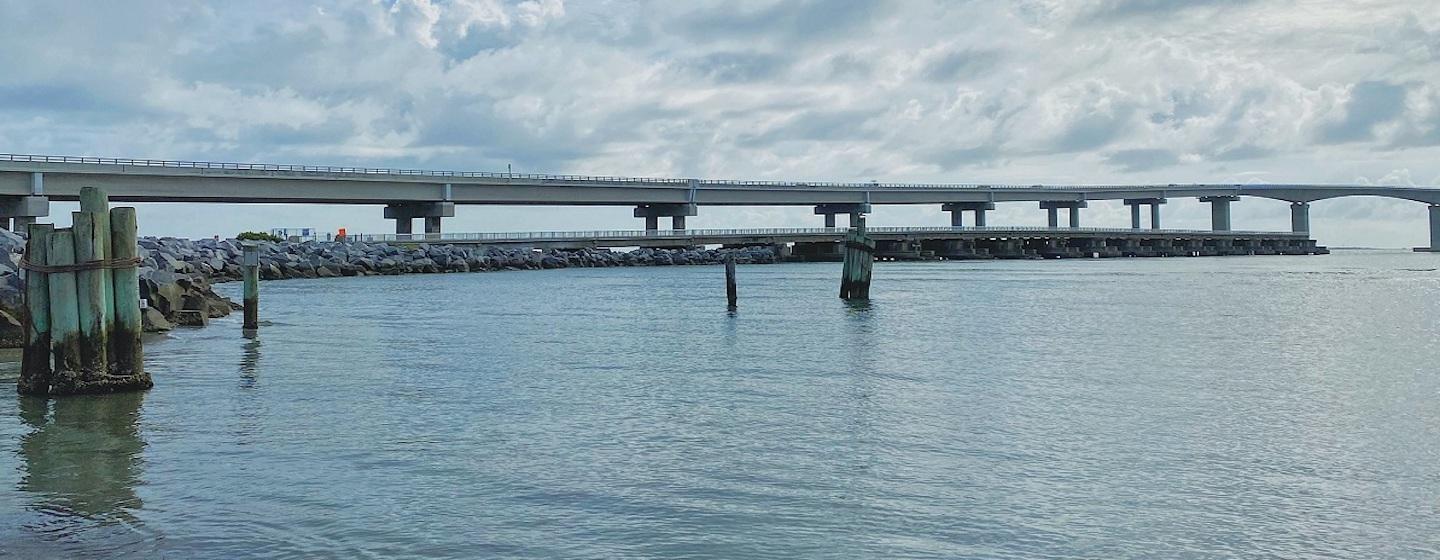Old Bonner Bridge Parts Used in Study


If you visited the Outer Banks anytime in the past 55 years, chances are you drove over the Herbert C. Bonner Bridge.
Built in 1963, the two lane, 2.7 mile bridge served as a transportation lifeline in the Outer Banks for tourists and residents alike. It carried NC 12 between Bodie Island and Pea Island.
In 2019, the Bonner Bridge was replaced with the 2.8-mile Marc Basnight Bridge.
Named in honor of the late Sen. Marc Basnight, the bridge is the first built in North Carolina with stainless reinforcing steel. The pilings are longer and deeper in the inlet floor to prevent sand washing away from around the piles. The Basnight Bridge is also wider.
About 1,000 feet of the south end of the Bonner Bridge was left in place for as a pedestrian walkway. Other portions of the bridge were demolished and used to build offshore reefs for fishing in coordination with the N.C. Division of Marine Fisheries.
But it turns out a few concrete girders from the old Bonner Bridge were brought to Raleigh, to help engineers build better bridges in the future.
The huge girders are being tested at N.C. State’s Constructed Facilities Lab. Engineers hope to learn what happens to bridge materials that are exposed to heavy traffic in addition to a half-century of extreme weather conditions.
The N.C. Department of Transportation is funding the project and coordinated the salvaging of girders for the testing project.
“This is a very unique opportunity,” said Neil Mastin, who manages NCDOT’s Research and Development unit. “It’s not often you get a bridge in that extreme environment for nearly 60 years that was intact enough that we can actually use it for testing.”
The first test repeatedly applied and removed force on the girders to see if there were any weaknesses. It’s the kind of stress a bridge receives when vehicles drive over it.
Then a continuous force was applied to see how much stress the girder could handle before it broke. It took about 200,000 pounds of force to break the girder.
To visualize that, imagine 2.5 tractor trailers piled on top of each other, balanced on just one wheel, and then lowered onto the girder.
Yep, that’s quite an image.
Sensors and cameras recorded how each beam responded to the loads, and where cracks formed when pressures were applied.
“What we’re trying to really investigate is the amount of pre-stressing in this structure,” said N.C. State University Assistant Professor Giorgio T. Proestos, who is leading the project at the university. “Is it enough? Should there be more? Should there be less? And how does that pre-stressing change in 60 years? Based on the results of the experiment, there might be changes in the way things are done moving forward.”
NCDOT plans to publish the results of the testing. Those results will likely influence bridge designs not only in North Carolina but also nationally.